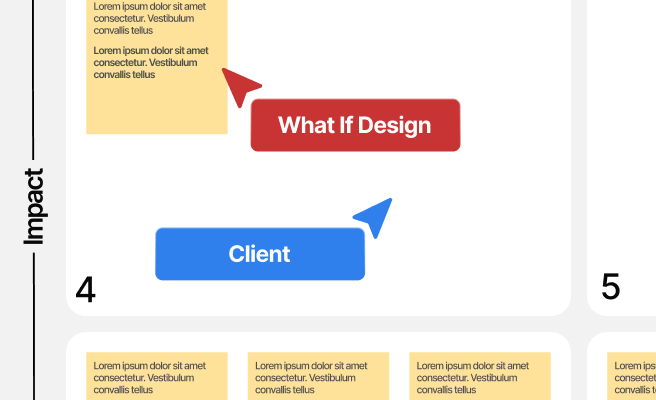Information Architecture
<p>Information architecture (IA) is the practice of structuring and organizing content in digital products to improve usability and user experience. By creating a clear, logical layout of information, IA helps users find what they need quickly and efficiently.</p>
<p>Historically, information architecture emerged from the fields of library science and cognitive psychology. These disciplines focused on how people categorize and retrieve information, which laid the foundation for modern IA practices in web and software design.</p>
<p>In the context of sustainable UX design for climate tech, effective IA can streamline complex data and processes, making it easier for users to navigate tools and applications aimed at addressing environmental challenges.</p>
<h2>Core Components of Information Architecture</h2>
<p>Effective information architecture involves several key components: organization systems, labeling systems, navigation systems, and search systems. Each plays a crucial role in creating a seamless user experience.</p>
<h3>Organization Systems</h3>
<p>These systems categorize and structure content. Common methods include hierarchical, sequential, and matrix structures. For climate tech applications, a hierarchical structure might help users drill down from broad categories like "Renewable Energy" to specific topics such as "Solar Power" or "Wind Energy."</p>
<h3>Labeling Systems</h3>
<p>Labels are the terms used to describe content categories, navigation options, and other interface elements. Clear and intuitive labels are essential. In a climate tech app, using industry-specific terminology like "Carbon Footprint" or "Sustainability Metrics" can help users quickly find relevant information.</p>
<h3>Navigation Systems</h3>
<p>Navigation systems guide users through the content. Techniques include menus, breadcrumbs, and links. Effective navigation in climate tech tools might involve a combination of top menus for broad categories and side menus for sub-categories.</p>
<h3>Search Systems</h3>
<p>Search systems allow users to find content by entering keywords. Advanced search features like filters and auto-suggestions can enhance user experience. For instance, a climate tech platform could offer filters for different types of renewable energy data, making it easier for users to locate specific information.</p>
<h2>Benefits of Good Information Architecture</h2>
<p>Good IA offers numerous benefits, including improved user satisfaction, increased efficiency, and higher engagement rates. For climate tech companies, these advantages translate to better user adoption and more impactful solutions.</p>
<p>A well-structured IA can also reduce the need for extensive user training, as intuitive navigation and clear labels make it easier for users to understand and interact with the product.</p>
<h2>Challenges in Implementing Information Architecture</h2>
<p>Creating effective IA can be challenging. Common hurdles include understanding user needs, balancing complexity with simplicity, and maintaining consistency. Climate tech products often deal with intricate data sets, making it crucial to find a balance between detail and usability.</p>
<p>Another challenge is ensuring flexibility. As climate tech solutions evolve, the IA must adapt to accommodate new content and features without compromising the user experience.</p>
<h2>Best Practices for Information Architecture</h2>
<p>To create effective IA, consider the following best practices:</p>
<ul>
<li><strong>User Research:</strong> Conduct thorough research to understand user needs, behaviors, and preferences. Tools like <a href="https://www.usertesting.com" style="color:#2896FF; text-decoration: underline;">UserTesting</a> and <a href="https://www.optimizely.com" style="color:#2896FF; text-decoration: underline;">Optimizely</a> can provide valuable insights.</li>
<li><strong>Clear Labeling:</strong> Use intuitive, descriptive labels that resonate with your audience. Avoid jargon unless it is widely understood within the target user group.</li>
<li><strong>Consistent Navigation:</strong> Ensure navigation elements are consistent throughout the product. This consistency helps users form a mental model of the information structure.</li>
<li><strong>Iterative Testing:</strong> Continuously test and refine the IA based on user feedback and performance metrics.</li>
<li><strong>Flexibility:</strong> Design the IA to be adaptable, allowing for the integration of new content and features without disrupting the user experience.</li>
</ul>
<h2>Conclusion</h2>
<p>Information architecture is a crucial element of sustainable UX design, particularly in climate tech applications. By structuring content effectively, designers can enhance usability, improve user satisfaction, and drive the adoption of impactful solutions. To learn more about improving your IA strategies, consider exploring resources from <a href="https://www.nngroup.com" style="color:#2896FF; text-decoration: underline;">Nielsen Norman Group</a> and <a href="https://www.iainstitute.org" style="color:#2896FF; text-decoration: underline;">IA Institute</a>.</p> <p>If you’re looking for inspiration to elevate customer and user experience for enterprise-grade products, View our work with the Ministry of Health of Saudi Arabia for curating the UX of an <a href="https://www.whatifdesign.co/work/enterprise-software-for-hospitals" style="color:#2896FF; text-decoration:underline;">Asset Management Tracking Platform</a></p>
<p>Ready to get started? <a href="https://cal.com/akhilak/what-if-design?duration=30" style="color:#2896FF; text-decoration:underline;">Book a 1:1 consultation call</a> with us today.</p>

Let's scale your impact with great design.
Free consultation, no sales pitch
Thank you! Your submission has been received!
Oops! Something went wrong while submitting the form.
Let’s talk
Nothing great is built alone.
Let’s connect about your vision, our work and how we can collaborate.
Get in touch

